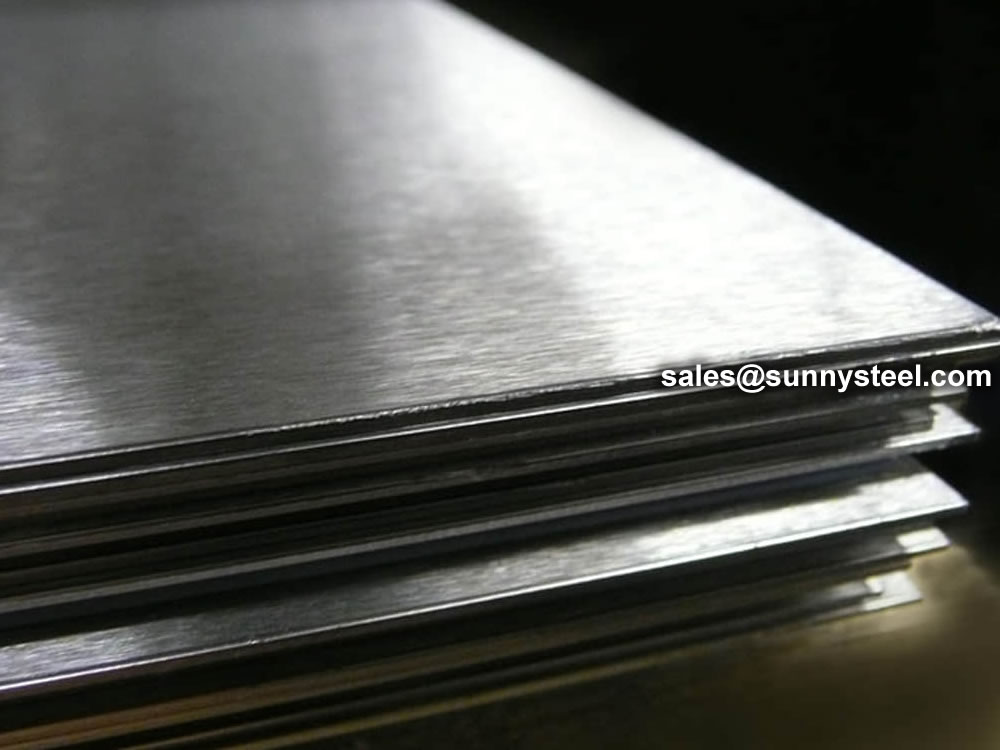
321 stainless steel plate is a type of austenitic stainless steel that is stabilized with titanium.
321 stainless is a standard austenitic 18/8 chromium nickel alloy with the addition of Titanium making it an excellent choice in elevated temperature environments.
The titanium stabilises the material removing its susceptibility to the effects of intergranular corrosion. 321 is therefore the stainless steel material of choice for applications in working environments up to 900° C.
A drawback of 321 stainless is that the titanium does not transfer well across a high temperature arc, so it is not recommended as a welding consumable.
In such instances, 347 is the preferred choice as the Niobium performs the same function as Titanium but can be still transferred across a high temperature arc. Type 347 is therefore the consumable of choice for welding Grade 321.
The steel has excellent forming and welding qualities and excellent toughness even at cryogenic temperatures. If you are looking for a stainless steel to provide resistance to intergranular corrosion, 304L is the normal choice as it is a more commonly used and supplied steel.
| DESCRIPTION | TYPE 321 |
|---|---|
| Proof Stress 0.2% (MPa) | 205 |
| Tensile strength (MPa) | 515 |
| Elongation A5 (%) | 40 |
| Hardness | HB: 217 HRB: 95 |
| UNS No | S32100 |
|---|---|
| EN | 1.4541 |
| AISI | 321 |
| Carbon (C) | 0.08 |
| Silicon (Si) | 0.75 |
| Manganese (Mn) | 2 |
| Phosphorus (P) | 0.045 |
| Sulphur (S) | 0.03 |
| Chromium (Cr) | 17.00 – 19.00 |
| Molybdenum (Mo) | |
| Nickel (Ni) | 9.00 – 12.00 |
| Nitrogen (N) | |
| Other | Ti:5x(C+N)/0.70 |
Alloy 321 (UNS S32100) is titanium stabilized austenitic stainless steel plate with good general corrosion resistance. It has excellent resistance to intergranular corrosion after exposure to temperatures in the chromium carbide precipitation range of 800 – 1500°F (427 – 816°C). The alloy resists oxidation to 1500°F (816°C) and has higher creep and stress rupture properties than alloys 304 and 304L. It also possesses good low temperature toughness.
Alloy 321H (UNS S 32109) stainless steel plate is the higher carbon (0.04 – 0.10) version of the alloy. It was developed for enhanced creep resistance and for higher strength at temperatures above 1000oF (537°C). In most instances, the carbon content of the plate enables dual certification.
Alloy 321 stainless steel plate cannot be hardened by heat treatment, only by cold working. It can be easily welded and processed by standard shop fabrication practices.
Alloy 321 stainless steel plate can be easily welded and processed by standard shop fabrication practices.
The alloy is quite ductile and forms easily.
The high sulfur content of Alloy 303 also has a detrimental impact on hot workability. If hot forming is required, once again, 304 should be considered as an alternate selection.
The cold work hardening rate of 321 stainless steel plate makes it less machinable than 410 stainless steel, but similar to 304. The table below provides relevant machining data.

When you partner with Sunny Steel, you can stop worrying about meeting deadlines thanks to our responsive and timely service. You'll also say goodbye to unnecessary shopping around. Instead, you'll get white glove service from an expert who understands your needs and can get you the materials you need quickly.
